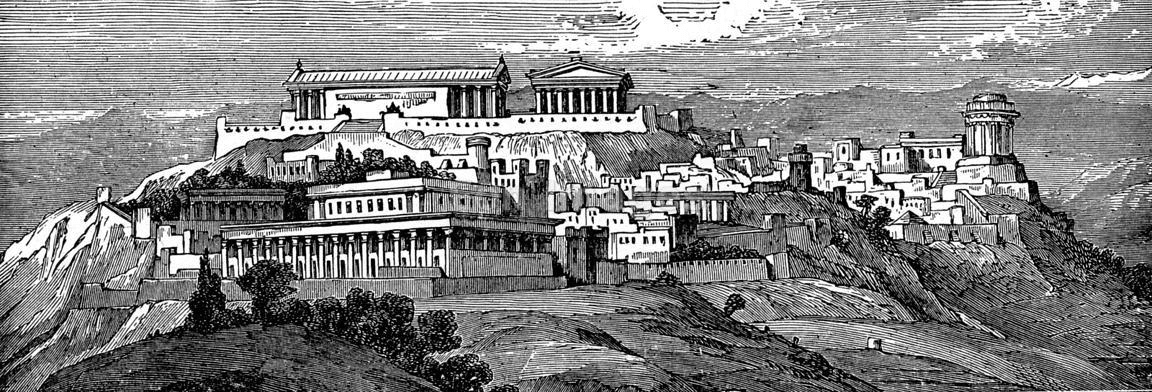Settlements > Susa
Susa
Background
Susa was originally the capital of Elam which was a civilization that neighbored ancient Sumer and was later conquered along with Sumer under the Akkadian Empire.

Susa Drawing -
Origins
Susa Dynasty (3750 BC)Avan Dynasty (2400 BC - 2095 BC)Simashk Dynasty (2095 BC - 1970 BC)Hamazi Dynasty (1970 BC - 1500 BC)Kidinuids Dynasty (1500 BC - 1400 BC)Igehalkids Dynasty (1400 BC - 1210 BC)Shutrukid Dynasty [The 1st Dynasty] (1210 BC - 1100 BC)Shutrukid Dynasty [The 2nd Dynasty] (770 BC - 640 BC)Shutrukid Dynasty [The 3rd Dynasty] (646 BC - 539 BC)Achaemenid rule begins in Susa (539 BC)It is believed that originally the city of Susa was itself its own kingdom inhabited by a group of people called the Susians. During the period of the first civilizations it was probably heavily contested territory due to its prime location in Mesopotamia. The first known reign of the Susians was the first Dynasty of Susa that began around 3750 BC.
After this around 2650 BC it appears the city was taken over by the Kingdom Kish lead by Enmebaragesi that was based out of their capital of Kish City on Kish Island in the Persian Gulf. They moved north along the coast of the Persian Gulf and conquered Susa.
Around 2280 BC the king of Susa known as Kudur-Nakhunta began a military campaign into Mesopotamia and was successful in conquering many civilizations throughout Sumer. During this period the city of Uruk was sacked and the Statue of the Goddess Nana was relocated to Susa.
Under the reign of Kudur-Nakhunta the city of Susa became a regional power in Mesopotamia and Southwest Asia and soon came to dominate Elam, Sumer and Kish.
The next king we know about from Susa's history was Shutruk-Nakhunta who boasted of destroying Chaldea and relocated the Statue of Melishikhu and built many temples at Susa. His records state he captured hundreds of cities and towns and brought back several kings as prisoners.
The grandson of Shutruk-Nakhunta’s named Shilkhak-in-Shushinak later restored all of the temples and statues his ancestors had collected and built including the Statue of Melishikhu, the Statue of Kudurru and many other statues to gods throughout Mesopotamia. During this time Susa had become a serious power in and of itself and one of the most influential cultural cities of the ancient era.
Foreign Invasion
Around 1100 BC the civilizations of Babylonia and Elam came together and realized the only way to stop the growth of Susa was to unite and destroy the kingdom. They were successful and subjugated the city of Susa until around 770 BC. Next the Assyrian king named Ashurbanipal invaded Susa in 640 BC and claimed it for the Assyrian Empire.
Following the Assyrians it was conquered by Cyrus the Great in 539 BC where it was later turned into a massive administrative capital within the Achaemenid Empire.
Achaemenid Empire
Apadana at Susa - History of Egypt IX ()
Shush, including Elam (ILam) and Anshan were all neighboring city-states. Many times during the ancient history, Shush had ruled the other two; many times Shush had even ruled the whole Mesopotamia! That is why eventually Shush (City) became the capital of Elam, in different eras of ancient history. Karibu-Sha-Shushinak also known as Shushinak (3750 BC) was one of Shush's great kings, he built many temples. Technically he was the first Shah of Iran.Susa City StateSusa Iranian City State (6000 BC - 3750 BC)Iran has 8000 years of history, oldest civilization on Earth. From 6000 BC to 3750 BC, The first civilization in Iran (Susa) was a city-state and ruled by Governors. Some Governors were subject rulers of Babylon, some autonomous, and some independent. For instance, Shimbi-ish-Khuk Governor of Susa [Under Babylon] (Before 3750 BC) was one.Susa KingdomSusa Iranian Ancient Kingdom (3750 BC - 539 BC)First King of Iran (Persian Kingdom)Karibu-Sha-Shushinak also known as Shushinak (3750 BC), son of Shimbi-ish-khuk (patesi of Susa, governor of the land of Elam), at First was a subject ruler Under Babylon, then he became an independent Sha (Shah), The Shah of Susa [First Shah of Iran]. Naturally before this period, there were Governors ruling Susa. Shushinak built many temples, monuments, a canal (Canal of Sidur) and wrote many inscriptions. Shushinak started the Kingdom of Iran.Susa Empire!Susa Kingdom expands to an Empire!On 2280 BC Kudur Nakhunta, famous Shah of Susa, king of Shush done the conquest of the whole Mesopotamia, he took over Chaldea and decorated his capital with the statue of the Goddess Nana which had been transported from Uruk (Capital of Chaldea) to Shush. We can trace at least 20 different kings in Shush which at least belonged to three different dynasties. We can also see the conflict of races in Shush.There were times that Elamites (ILamies) hemitics were in power, and then there were times that Anzan (Anshan) Asianics were in power, the mixture of Hemitics, Asianics, and the Local Iranian races was what made Shush flourish! Shush took the best of all three in different periods of its history.There were times that Shush (Susa) practically took over the whole Mesopotamian Civilizations including Sumer, Akkad, Babylon, Assyria, Chaldea, and the Iranian Civilizations of Elam and Anzan. Those were the times which Shush ruled the whole region. There are stone sculptures, ruins of buildings, bronze metal works, jewelry and industrial art, and many other artifacts left from this civilization.